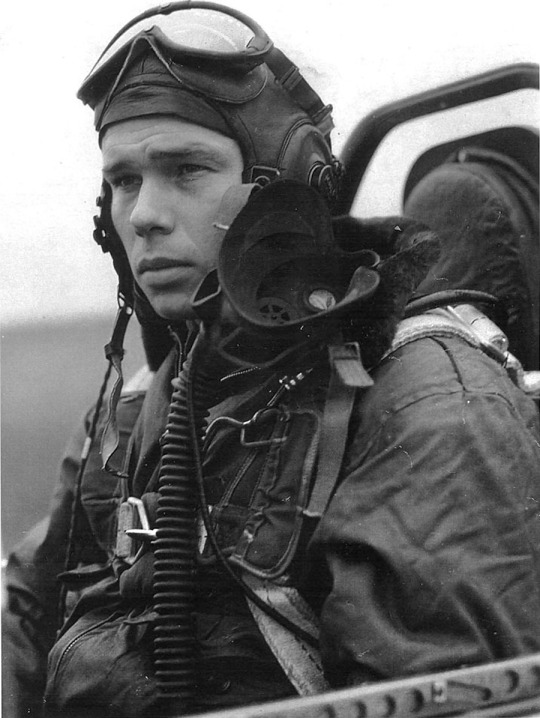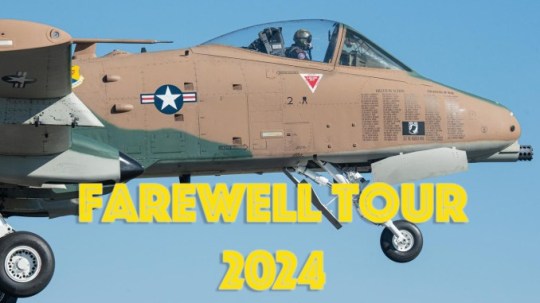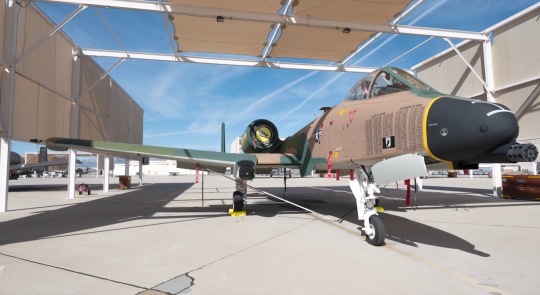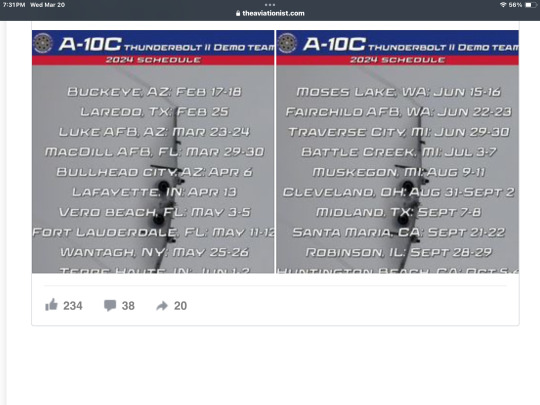#357th Fighter Group
Explore tagged Tumblr posts
Text
#notable deaths#obituaries#deaths (obituaries)#in memoriam#obituary#world war 2#triple ace#p 51 mustang#pp 38 lightning#fighter pilot#357th Fighter Group
0 notes
Text

P-51D Mustang 357th Fighter Group, 362nd Fighter Squadron, “Man O' War” Capt Kenneth E Hagen at Steeple Morde
86 notes
·
View notes
Text

A B-24 Liberator (s/n 44-40437) nicknamed "Hairless Joe" of the 493rd Bomb Group is escorted by P-51 Mustangs of the 357th Fighter Group, ca 1944
97 notes
·
View notes
Text

From left: 357th Fighter Group's Maj. Richard A. Peterson, Maj. Leonard “Kit” Carson, Maj. John England and Maj. Clarence E. “Bud” Anderson. "Bud" Anderson peacefully passed away on May 17, 2024, at the age of 102. He had been promoted to Brigadier General. ➤UNRELEASED INTERVIEW WITH BUD ANDERSON: https://youtu.be/ALKRGL9qN7E
➤HD IMAGE: https://dronescapes.video/Anderson
#bud anderson#Triple Ace#aviation pioneer#aviator#ww2 pilot#veteran#veteransday#veterans#p 51 mustang#youtube#aircraft#airplane#aviation#dronescapes#military#documentary#aviation history#ww2#wwii
45 notes
·
View notes
Text

B-24 44 40437 "Hairless Joe" of the 493rd Bomb Group escorted by P- 51 Mustangs of the 357th Fighter Group. The role of the Mustang in #WWII is legend.
@Francesbekafigo via X
16 notes
·
View notes
Text

1945 01 Ramrod -Outward Bound - John Shaw
In the winter of 1944-45, the skies over Germany were usually littered with literally thousands of Allied planes flying RAMROD missions, a term used by the US Air Force to describe strikes by long-range strategic bombers escorted by fighter jets flying out of their bases in England. It shows famed three-time ace Clarence E. " Bud "Anderson flying his P-51D Mustang "Old Crow" protecting a B-17 from the 100th Bombardment Group. As the leading ace of the 357th 363rd Fg Squadron, Anderson achieved a remarkable result-116 combat missions, never coming under fire from enemy aircraft.
75 notes
·
View notes
Photo

357th Fighter Group, Oshkosh 2019
#357th fighter group#p-51 mustang#old crow#gentleman jim#ain't misbehavin#warbird#airplane#eaa#aviation#airventure#oshkosh
52 notes
·
View notes
Video
North American P-51D by Willard Womack Via Flickr: P-51D #4-14977, "The Count" (cartoon character from "Yank" & "Stars & Stripes" ) of the 357th Fighter Group, 363rd Squadron. The 357th lining up for a mission carrying the glue impregnated drop tanks. These carry 110 gallons each, giving the P-51 just short of 5oo gallons, (2930lbs) and over seven hours flying time. Armed with six fifty caliber machine guns (420lbs), and carrying 1,880 rounds (470lbs). (All of these weights can very, but are very close estimates.) Empty weigh is 7,125lbs . Max weight is 12300lbs.
31 notes
·
View notes
Text

North American P-51B in maintenance "Daddy's Pet", 357th Fighter Group
48 notes
·
View notes
Text



Lt. Ernest Charles Fiebelkorn scored 9 victories with the 20th FG including downing the Me-262 of Walter Nowotny.
A native of Lake Orion, Michigan and grandson of German immigrants, Ernest Charles Fiebelkorn, Jr. was the first born son of Ernest and Helen (Howarth) Fiebelkorn. His father died from injuries received in a fall from a roof in 1936, leaving his mother, a teacher in the Lake Orion School System, to raise Ernest, Jr. and his four siblings Betty, Roger, Jack and Lucille. Ernest (called "Red" by his family) was an athletic young man with red hair. He excelled in Basketball and Baseball in school and loved to bowl in his spare time. Having graduated at the age of 17 he asked his mother to grant him permission to enlist in the Army Air Forces so he could pursue his dream of flying airplanes but she refused and encouraged him to try college first. He worked for General Motors Truck & Coach Division, in Pontiac, Michigan, until his classes began at Michigan State College in the Fall of 1941. In May, 1942 he left school and promptly enlisted in the Armed Forces but he wasn't called up for duty until November, 1942. He graduated from flight training at Williams AAF Base, Chandler, Arizona with class 43-H, on the 30th of August, 1943 and was commissioned a 2nd Lieutenant. In January, 1944 he was assigned to the 20th Fighter Group.
Though his combat tour started slow, he ended the war as the top scoring ace of the group. Promoted to 1st Lieutenant in May, 1944, on the 28th of September he was credited with downing three Me-109's and an Fw-190 near Magdeburg and barely missed attaining "ace in a day status" as he damaged an additional Me-109. For that mission he was awarded the Silver Star. On November 2nd he scored another triple (three enemy aircraft downed in one day) during an escort mission to Leipzig, and was again awarded a Silver Star. On October 6th he was sent to London to appear, alongside of Lady Mountbatten and a 385th Bomber Group pilot named Fein Pool, on a radio show broadcast the American Broadcasting System In Europe where he recounted his experiences in combat.
He next shared in the destruction of an Me-262 on November 8th, 1944, along with Lt. Edward Hayden, of the 357th Fighter Group. It was later discovered the German jet had been piloted by the famed German ace Major Walter Nowotny (the fifth highest scoring ace of all time with 258 victories and Commander JG 7, the first jet equipped Fighter Group.) It was Fiebelkorn's final aerial victory, giving him a total of nine.
"'Fieb' was originally assigned to 79th Squadron. It seems he was always in some trouble with numerous groundings. For a time he was put off flying status and assigned to Group HQ. I always thought he was there for laughs," noted former 79th Fighter Squadron pilot Arthur Heiden. "Then he was assigned to the 77th Fighter Squadron at the request of Colonel Russell Gustke. There they seemed to appreciate his unique personality and 'Fieb' thrived."
Fiebelkorn is thought to have been one of the largest fighter pilots to see action in the E.T.O. At 6'4" and 225 pounds, he must have had a difficult time getting himself into the cockpit of his P-51D, Serial #44-11161 (LC-N), "June Nite" - named for his California-born wife, the former Ms. June Allyn, whom he had married in 1943.
Ernest returned home on leave from England in December, 1944, just after being promoted to the rank of Captain. He met June in New York and together they visited with his mother in Michigan before continuing on to his next assignment. It was around this same time the family received word of the death of his 18 year old brother Roger, an Army Pfc. who had died in action while assigned to the Headquarters Company, 397th Infantry, 100th Division in Eastern France.
Having remained with the USAF Reserve, Ernest was assigned to the 4th Fighter Interceptor Squadron, 51st Fighter Wing, flying F-82 Twin-Mustangs out of Okinawa. There he was "A Flight" Commander and one of the squadron's premier pilots. Known for accepting even the most dangerous of missions without question, he often volunteered for what others considered hazardous duties. His commander, Lieutenant Colonel John Sharp recounted that Fibelkorn actually wanted to see how the F-82 would do in a dogfight with enemy Yak aircraft and, though the heavy twin-fuselage aircraft would obviously be outmatched, there were many in the squadron who would have bet on Fiebelkorn's skills as the deciding factor in the fight. As the situation in Korea began to heat up the squadron were deployed to Honshu, Japan.
On the 6th of July, 1950, Fiebelkorn was flying as part of a four-ship element sent to locate advancing enemy ground forces through heavy low overcast. After hours of searching with no results he reported that he was going to descend lower in the mountainous terrain hoping to find an opening in the dense cloud cover. He was never heard from again. Nearly 2 ½ years later his remains, and those of his radar observer, Captain John J. Higgins, were discovered by Allied troops on a mountainside approx. 40 miles north of Seoul. Fiebelkorn was finally laid to rest with full military honors at Arlington National Cemetery. The highest scoring USAAF ace from the state of Michigan, he left behind his wife and a 3 year-old son, Eric.
During the time he was missing in action Fiebelkorn was promoted to the rank of Major, but the promotion was subsequently withdrawn by the USAF as he had been selected for it after the actual date of his death. He was, however awarded an additional Distinguished Flying Cross for his actions on the day he was killed.
Sources: Profile compiled by Syd Edwards. Photograph courtesy of the Jack Cook Collection.
14 notes
·
View notes
Text
A Smithsonian Curator Reflects on Chuck Yeager, a Pilot With the 'Right Stuff'
https://sciencespies.com/history/a-smithsonian-curator-reflects-on-chuck-yeager-a-pilot-with-the-right-stuff/
A Smithsonian Curator Reflects on Chuck Yeager, a Pilot With the 'Right Stuff'

Smithsonian Voices National Air and Space Museum
Remembering Chuck Yeager, a Pilot with the Right Stuff
December 8th, 2020, 1:55PM / BY Bob van der Linden

Chuck Yeager with Bell X-1.
The greatest pilot of the greatest generation has passed. Seventy-nine years to the day after the attack on Pearl Harbor, famed test pilot, World War II ace, and the first person to fly faster than the speed of sound, Brig. Gen. Charles “Chuck” Yeager, died at the age of 97.
On October 14, 1947, Yeager forever shattered the myth of the so-called “sound barrier” when he piloted his Bell X-1 Glamorous Glennis to 700 miles per hour (Mach 1.06) 43,000 feet above the southern California desert. The X-1 program contributed greatly to the understanding of the challenges of transonic and supersonic flight. Of great significance to the security and prosperity of the country, these lessons were directly applied to the next generation of military and commercial aircraft, keeping America in the forefront of aeronautical research.

Pilot Chuck Yeager poses with the Bell X-1 Glamorous Glennis during a visit to the Museum in 2015. (Smithsonian’s National Air and Space Museum)
Born in Myra, West Virginia, on February 13, 1923, Yeager grew up in nearby Hamlin where he developed an innate understanding of all things mechanical. This ability held him in good stead in his military career as his knowledge of machines and his exceptional skills as a pilot would make him an ideal test pilot, despite his lack of a formal college education.
General Yeager began his aviation career in September 1941, enlisting in the Army Air Corps. In July 1942, he was accepted for pilot training in the flying sergeant program, earning his wings and his appointment as flight officer in March 1943.
Following the completion of advanced training, Yeager was assigned to the 357th Fighter Group of the 8th Air Force flying from England. While piloting his North American P-51 Mustang, Yeager destroyed 13 German aircraft in air-to-air combat, including five in one mission. Included in his remarkable tally is one Messerschmitt Me 262, the world’s first operational jet fighter. On March 5, 1944, he was shot down over France but escaped capture with the help of the French resistance which spirited him to safety in neutral Spain. He rejoined his unit soon thereafter, serving until February 1945 when he returned to the United States to serve as an instructor pilot. In July 1945, Yeager was assigned to Wright Field, Ohio, where he first engaged in experimental flight work. Following this assignment and until 1954, Yeager flew experimental aircraft from Muroc Army Air Force Base, later renamed Edwards Air Force Base, where, on October 14, 1947, he became the first person ever to fly faster than the speed of sound. His aircraft, a Bell X-1 Glamorous Glennis, named after his wife, is proudly displayed in the Boeing Milestones of Flight Hall at the Smithsonian’s National Air and Space Museum.

Bell X-1 Glamorous Glennis on display in the Boeing Milestones of Flight Hall at the Museum in Washington, DC. (Smithsonian’s National Air and Space Museum)
Following this posting, General Yeager returned to Europe as Commander of the 417th Fighter Squadron and in 1957 was assigned to the 413th Fighter Wing at George Air Force Base, California. In 1958 he became commander of the 1st Fighter Squadron at Moron Base, Spain.
General Yeager graduated from the Air War College in June 1961, became Commandant of the Aerospace Research Pilot School in July 1962 and in 1966 assumed command of the 405th Fighter Wing at Clark Air Base, Philippines, during which time he flew 127 combat missions over Vietnam. Returning home in 1968, General Yeager took command of the 4th Tactical Fighter Wing at Seymour Johnson Air Force Base, North Carolina, and in 1969 advanced to Vice Commander, 17th Air Force based in Ramstein, Germany. In 1971 he became the United States’ Defense Representative to Pakistan, and in 1973 became the Director of the Air Force Inspection and Safety Center at Norton Air Force Base.

Informal portrait of Brigadier General Charles E. ‘Chuck’ Yeager, standing on the cockpit ladder of a McDonnell Douglas F-15B Eagle at Edwards AFB, CA. Circa 1980s. (National Air and Space Museum Archives, Smithsonian Institution)
General Yeager received the Collier and MacKay Trophies for 1948 and the Harmon International Trophy for 1954. His awards included the Distinguished Service Medal, the Silver Star with one oak leaf cluster, the Legion of Honor with one oak leaf cluster, the Distinguished Flying Cross with two oak leaf clusters, the Bronze Star medal with “V” device, the Air Medal with 10 oak leaf clusters, the Air Force Commendation Medal, the Purple Heart, the Distinguished Unit Citation with one oak leaf cluster, and the Air Force Outstanding Unit Award Ribbon. He was a command pilot with over 10,000 hours in 155 types of aircraft.
Although a legend in the aeronautical community, Yeager’s accomplishments were not widely known until the publication of Tom Wolfe’s The Right Stuff and the subsequent movie highlighted Yeager’s career as a test pilot, making him an immensely popular public figure.
General Yeager was also a good friend to the Smithsonian. For decades he visited the National Air and Space Museum on or about the anniversary of his supersonic flight, each year regaling hundreds of enthralled visitors with stories of his extraordinary career. In 1997, during one of his visits, 50 years to the day after he broke the sound barrier for the first time, Deputy Director Donald Lopez, a friend of Yeager’s from their time together as test pilots, arranged for Yeager to climb in the cockpit of the X-1 high above the floor of the Boeing Milestones of Flight Hall. After that remarkable visit, Yeager generously donated his collection of personal items, including his flight jacket and other memorabilia.
A legend has passed.

Chuck Yeager takes a photo in the cockpit of Bell X-1 Glamorous Glennis during a visit to the Museum in 1997 to celebrate the 50th anniversary of breaking the sound barrier for the first time. (Smithsonian’s National Air and Space Museum)
#History
1 note
·
View note
Photo

Lil Kitten, 357th Fighter Group
296 notes
·
View notes
Text

Lt Kenneth J Miller in his P-51D Mustang, 355th Fighter Group, 357th Fighter Squadron.
258 notes
·
View notes
Photo

A P-51D Mustang (G4-P, serial number 44-14245) nicknamed "Floogie II" of the 357th Fighter Group escorts a damaged B-17 Flying Fortress of the 96th Bomb Group, flown by "Woody" Woodson during a mission.
"Woody" Woodson states that his ship had lost an engine and a second was beginning to fail, leaving his aircraft alone behind the formation over enemy territory. 'Floogie' responded to their call for help and provided escort.
The image was taken by the waist gunner aboard Woodson's B-17 who coaxed the P-51 closer in order to take the image.
Woodson stated: 'We were hit by flak on the bomb run and lost an engine. A second engine was giving trouble and would not keep up with the formation. We suddenly felt very alone in the skies over Germany. Called the fighter channel on the radio and miraculously a lovely P-51 showed up on our wing in a surprisingly short time. We knew his wing man was above flying cover so we began to relax. A waist gunner had a 35mm camera with color film- a WWII rarity. We coaxed the P-51 closer and closer and this is the picture that resulted. It still brings a lump to my throat when I look at it.' © IWM (FRE 6100)
315 notes
·
View notes
Text

End Of An Era: A-10C Thunderbolt II Demo Team Announces Final Airshow Season
The A-10 Demo Team has just announced their farewell tour 2024.
David Cenciotti
A-10 Demo Team Farewell Tour 2024
The U.S. Air Force A-10C Thunderbolt II demonstration team is the unit in charge of highlighting the A-10C’s capabilities during airshows across the United States and to recruit, retain and inspire the next generation of Airmen. The team will perform its duty for one last season this year: in fact, as announced on social media, 2024 is going to mark the final airshow season for the Warthog demo.
The farewell tour does not come unexpected though: last month, the 355th Wing at Davis-Monthan AFB, Arizona, where the Demo team is based, begun divesting its fleet of A-10 aircraft after nearly 50 years.
The first model of the aircraft to arrive at Davis-Monthan was an A-10A on March 2, 1976. This model was assigned to the 355th Tactical Fighter Wing that arrived here in 1971 and replaced the Vought A-7D Corsair flown by the 355th TFW. The 355th TFW was later reclassified as the 355th Tactical Fighter Training Wing, prompting the 354th, 357th, and 358th Fighter squadrons to train U.S. Air Force Pilots on the A-10A aircraft.
A-10 Demo Team

The heritage paint scheme of the A-10C Demo Team, introduced for 2023 season.
The U.S. Air Force has plans to divest the entire fleet of A-10 aircraft within the next 3-5 years, when the iconic jet will be replaced by the F-35.
“The A-10 has been the symbol of Davis-Monthan Air Force Base for many years, and it will continue to be a symbol for the Airmen of DM, a symbol of their commitment, excellence and service,” said U.S. Air Force Col. Scott Mills, 355th Wing commander and A-10 pilot in a public statement. “For now, we’re divesting a single squadron during the summer-fall timeframe of 2024.”
Coinciding with the divestment, Davis-Monthan plans to expand its Rescue Footprint, which may lead to additional utility of the HC-130 aircraft and the HH-60W helicopter. Airframes expected to arrive from the Air Force Special Operations Command include the MC-130 and OA-1K.
A-10 Demo pilot

Capt Lindsay “MAD” Johnson, Demo Team Commander, poses in front of her aircraft.
“From an Ops personnel standpoint, this divestment arguably allows a more expeditious stand-up of the F-35, even as that program continues to struggle with a variety of delays,” said U.S. Air Force Col. Razvan Radoescu, 355th Operations Group commander.
The aircraft 82-648 was the first to be retired from service at Davis-Monthan on Feb. 6, 2024, and transited from the 354th Fighter Squadron to the 309th Aerospace Maintenance and Regeneration Group for final maintenance procedures and display preparation for the Davis-Monthan where hundreds of retired Aircraft are stored.
“There will always be a job for maintainers; it may not be on the A-10, but the Air Force needs maintainers to sustain airpower,” said U.S. Air Force Col. Clarence McRae, 355th Maintenance Group commander, “Perhaps the biggest draw of future maintainers will be in the F-35 community. Airplanes are still going to break, and we are still going to fix them.”

One of the memes that you could find online during the early days of the Ukrainian invasion by Russia.
Anyway, there’s still time to attend an airshow and watch the A-10 Demo Team, commanded by Capt Johnson, an Instructor Pilot and Flight Commander assigned to the 357th Fighter Squadron, Davis-Monthan AFB, Arizona and previously served also in Texas and Korea, at her second season as the commander of the team.
Here’s the schedule.

About David Cenciotti
David Cenciotti is a journalist based in Rome, Italy. He is the Founder and Editor of “The Aviationist”, one of the world’s most famous and read military aviation blogs. Since 1996, he has written for major worldwide magazines, including Air Forces Monthly, Combat Aircraft, and many others, covering aviation, defense, war, industry, intelligence, crime and cyberwar. He has reported from the U.S., Europe, Australia and Syria, and flown several combat planes with different air forces. He is a former 2nd Lt. of the Italian Air Force, a private pilot and a graduate in Computer Engineering. He has written five books and contributed to many more ones.
@Aviationist via X
9 notes
·
View notes
Text

1945 04 P-51D Mustang 'Big, Beautiful Doll ' Col. John Landers 357 FG - Stan Stokes
Col. John D. Landers, the pilot of the Big Beautiful Doll, was born in 1920 in Wilson, Oklahoma. He attended Texas A & M and Arkansas State University before joining the Army Air Corp. In March of 1941 Landers graduated from aviation cadet training and was commissioned as a second lieutenant. With America thrust into WWII following the attack on Pearl Harbor, Landers was assigned to the 49th Fighter Group and set forth to Australia. Flying a Curtis P-40 out of bases in Darwin and Port Moresby, Landers became an ace by downing two Betty bombers and four Mitsubishi Zeros. When his first combat tour ended, Landers returned to the States as a P-38 Lightning instructor. During a second combat tour Landers was assigned to the European Theatre as Commander of the 38th Fighter Squadron of the 55th Fighter Group. On June 25th 1944 Landers downed his first German aircraft, an Fw190. Several days later he would bag three Me110s on a single day. Later in 1944 Landers was made acting Commander of the 357th Fighter Group. Flying a P-51 Mustang for the first time he obtained an aerial victory on November 18th. Landers returned to America for a brief rest following completion of his second combat tour. However, by January of 1945 he was back in action as C.O. of the 78th Fighter Group which flew out of Duxford, England. Landers attained 3 ½ additional confirmed aerial victories and destroyed many additional enemy aircraft on the ground. In fact the 78th Fighter Group destroyed 125 German aircraft on the ground on April 16th 1945, which is a record for one day. After V.E. Day Landers was given command of the 361st Fighter Group which he was preparing to take to the Pacific when the war ended. Officially credited with 14 ½ aerial victories, Landers decorations include the Silver Star with two Oak Leaf Clusters, the Distinguished Flying Cross with three OLCs, the Purple Heart, the Croix de Guerre, and the Air Medal with twenty-one OLCs. The ace returned to civilian life after the war where he was active in the pipeline business in the Southwest. He retired in 1975, and passed away in 1989 from complications during surgery. The P-51 Mustang played a major role in the Allied victory in WWII. The P-51 was the first fighter with the range to accompany bombers into Germany, and tangle with the best of the Luftwaffes fighters on an equal basis. Many Mustangs carried unique personalized paint schemes. The Big Beautiful Doll is considered by many to be one of the classics with its checker board cowling, black rudder, and red accents.
36 notes
·
View notes